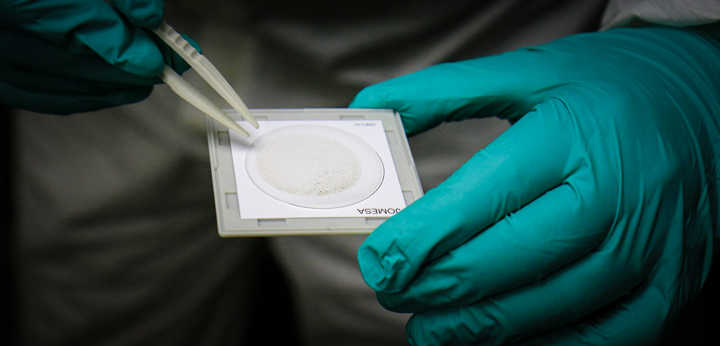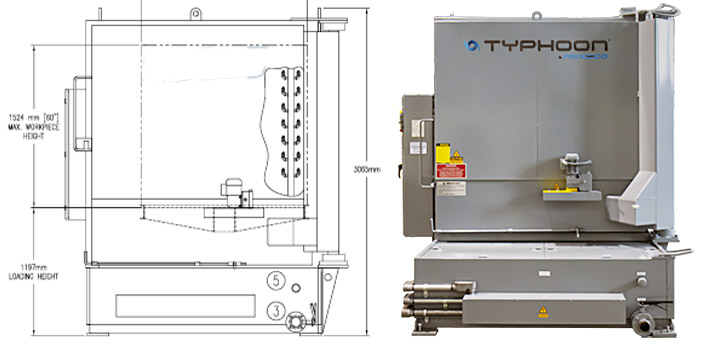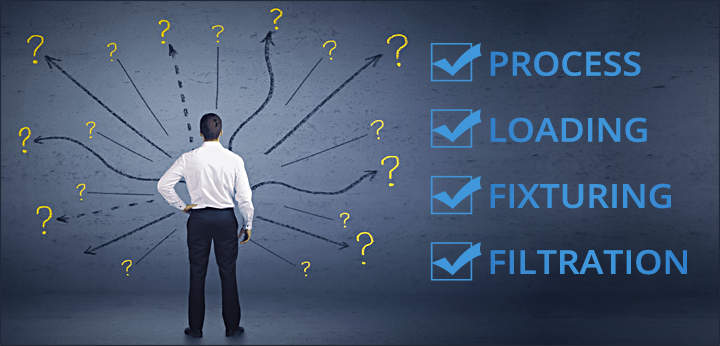Throughout parts manufacturing, inspecting workpiece cleanliness is essential in determining whether the cleaning process performs to specifications.
Parts manufacturers inspect cleanliness regularly to validate and maintain a high level of quality and durability in their products. With increasing demands to reduce greenhouse gas emissions, vehicle powertrain assemblies require increasingly precise manufacturing tolerances and high-performance lubrication. When one considers the complete assemblies such as an engines or transmissions, cleaning inspection is essential to controlling the cleaning process of each component and the total contamination it will contribute to the entire assembly.
WHY AND WHEN SHOULD MILLIPORE TESTING BE REQUIRED?
Millipore inspection is typically used when a fluid is in contact with moving parts, for example, inside an engine, transmission, fuel system, and now EV battery and motor assemblies. Residual contaminants in a lubrication or fuel injection system can cause premature failures, leading to safety recalls and increased warranty costs. Initially – Millipore testing validates new cleaning equipment’s ability to meet the cleaning specification. Thereafter, ad hoc or systematic analysis ensures the repeatability of the process and of meeting the specifications.
METHODOLOGY
Equipment required for cleanliness analysis:
- Vapor Corrosion Inhibitor (VCI) bags to isolate parts after cleaning
- Latex gloves to protect both hands and parts
- Millipore testing equipment, including pressure sprayer
- Analytical balance (min weight: 0.1 mg)
Tests are performed in a controlled environment such as a laboratory with controlled humidity and temperature. Applying a positive pressure in the room reduces environmental contamination by keeping airborne contamination outside of the room.
A typical testing method for cleanliness of components and systems for road vehicles is the extraction procedure mentioned in ISO_16232. The critical surfaces of the part are pressure-rinsed at 20 psi with 250 mL of a prepared aqueous solution. The pressure-rinse solution is collected and poured through a filter membrane. Depending on the application, the mesh size varies (the most common mesh sizes are 5 and 10 µm). The membrane is then transferred to a conduction oven at 60 °C to dry.
The sediment (contamination) weight is obtained by subtracting the weight of a filter before and after extraction. Filters should be dry before weighing. To further measure the size and identify the types of particles on the filters, microscopic analysis is required.
Microscopic analysis can provide information regarding particle size and material; for example, whether the particles are metallic or nonmetallic. The automatic filter analysis can be performed with systems such as JOMESA to analyze the contaminants on the filter membranes.
CRITERIA THAT MAY AFFECT RESULTS
The following factors can affect the washer’s cleaning performance:
- Type of filtration used – bag- or cartridge-type filters, where cartridge filters are required for more stringent cleaning specifications.
- The filter material can be an issue if it is not compatible with the cleaning chemistry.
- The condition of the filter media - dirty filtration affects flow, pressure, and quality of cleaning solution.
- Materials of construction - a carbon-steel parts washer will not be able to offer the same performance as a stainless-steel parts washer. Scale or slight surface corrosion of carbon steel can re-contaminate the part.
The type of soils being cleaned from the parts also influences the repeatability of the results. Attached chips, surface rust, or a previously applied long-term rust inhibitor may vary the results.
Equally important is the chemistry used for the application. The manufacturer often dictates the cleaning chemistry for reasons of convenience; however, it should be selected based on the contaminant to be removed.
The external environment where the washer is installed will also affect the results. Airborne contaminants up to 75 µm can settle on parts after cleaning, thereby influencing the results.
Ultimately, the test procedure, the condition of the Millipore equipment, and its handling will influence the results. Testing in a controlled environment such as a laboratory with filtered air and a controlled temperature is best to maintain consistency of results during analysis.
MAINTAIN AND IMPROVE THE ACCURACY OF RESULTS
Proper care and preventive maintenance of the washer is essential to repeatability of results. Maintenance starts with a clean and titrated cleaning solution. Parts cleaning is a process — allowing the wash solution to become overly contaminated and the detergent to deplete will only lead to rejected parts due to inadequate cleaning. Maintenance personnel must check and replace the filtration elements on the wash and rinse pumps as well as the dryer blower according to an established maintenance schedule. They should also check other process parameters such as conveyor speed, cleaning solution pressure, nozzle orientation, and operating temperature periodically.
As newer technologies develop, the demand for cleanliness inspection such as Millipore testing is growing. Manufacturing companies that produce these parts must continue to adapt to this demand and control cleanliness inspection. Parts washing equipment is essential but it is not the only key to success. As mentioned, several other factors will have a big influence on the process. Effective preventive maintenance, proper detergent selection for contaminants, and a clean external environment all help to maintain and improve cleaning results and meet required specifications.



